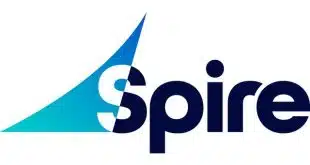First Data Corp.’s Star Network introduced on Wednesday technology that represents the first effort by a U.S. electronic funds transfer network to adopt contactless transactions. The technology, which Star calls CertiFlash, will use chips embedded in PIN debit cards to communicate with point-of-sale readers and to generate one-time account numbers for added security.
The new product will undergo a pilot that will start shortly and run until the end of the year with an undisclosed Star member bank, Julie Saville, vice president of product management at Star, tells Digital Transactions News. She will not reveal other details, such as where the pilot will take place or how many merchants and cardholders will be involved. For the pilot, merchants will be equipped with the FD 30 and the FD 100 terminals that are sold under the First Data brand. The former terminal incorporates a contactless reader and PIN pad; the latter will have an external contactless reader linked to it.
Besides the usual antenna used to transmit card-account details in contactless transactions, the embedded CertiFlash chip will also be capable of calculating and transmitting a unique account number for each transaction, using technology developed at First Data and for which the company has applied for a patent. The number will be good for that transaction only, and so would be useless to hackers or skimmers, Star says. Once merchants send transactions to Star for switching, the network will link the proxy number to the actual account number so issuers can authorize payments.
The pilot will apparently serve as a mere prelude to a commercial rollout of CertiFlash soon afterward. “I hate to call it a pilot,” says Saville. “This is our new technology going forward.” Indeed, Star sees the new technology as a way to recruit new merchants for Star acceptance and lay the foundation for mobile payments based on near-field communication. “As payments move onto mobile phones, we already have the technology there,” Saville says.
The use of contactless technology with PIN debit is unusual and even somewhat controversial. Many experts say PIN entry defeats the purpose of contactless, which is touted as a means of speeding up transactions so that high-throughput, low-ticket merchants can justify replacing cash transactions with cards. Indeed, Visa Inc. advanced this argument last year when it disallowed PIN-based authorizations on contactless transactions, forcing merchantd to accept only higher-cost signature debit payments on their contactless systems. Electronics giant Best Buy Co. Inc. responded by refusing to accept cards on Visa’s payWave contactless platform (Digital Transactions News, Jan. 11).
But CertiFlash transactions will be processed without a PIN on all tickets at or under $25, a move Saville says will alleviate much of the concern about PIN entry slowing down checkouts. She refuses to say how many transactions Star processes at or under $25, or what percentage this makes up of the total volume. “It’s a pretty high figure,” she says. She adds that this move represents the first time Star has permitted PINless transactions at the point of sale. It has done so for several years for certain online bill payments.
At the same time, the national card networks have been able to sell contactless only to a small minority of merchants, leaving a sparse number of outlets where consumers can use the technology. Saville says much of the reluctance by merchants could stem from the fact that up to now no EFT network had offered contactless payments. “We’ve heard from merchants saying, ‘We haven’t adopted contactless until we have an option of working with the EFT networks,’” she says. “I hope we can help spread contactless.”
At least some of that reluctance, though, has also stemmed from the refusal by Visa Inc. and MasterCard Inc. to offer special incentive interchange rates on contactless transactions. Saville refuses to discuss Star’s pricing plans for CertiFlash transactions . “At the launch, [rates] will be similar to PIN debit interchange, and that’s all I can say at this point,” she notes.
Experts generally laud Star’s gambit, though some argue many banks could shun the new product, since it promotes PIN debit, a form of debit that offers less interchange income than signature debit.
CertiFlash “positions [Star] well to support mobile technology in the future,” says Beth Robertson, director of payments research and consulting at Javelin Strategy & Research, Pleasanton, Calif. She calls the entry of an EFT network into contactless and Star’s use of one-time-use account numbers “significant steps forward.”
Avivah Litan, who follows payment-security issues as technology analyst at Gartner Inc., Stamford, Conn., also sees value in the proxy-number technology. “It’s a very good feature,” she says. “If criminals steal the data they can’t use it again.” She also sees the new product as “a competitive move to keep [Star’s] ground relative to signature debit.” But Litan cautions that Star may have to do all the heavy lifting to sell CertiFlash to consumers and merchants. “Banks aren’t going to promote this,” she says. “They put revenue ahead of security.”
For her part, Saville appears to have few doubts about the ultimate success of CertiFlash. While conventional mag stripes will co-exist with chips on Star’s cards, she sees the shelf life of mag-stripe technology as short. “I don’t know how short it will be,” she says. “We’re trying to make it shorter.”





